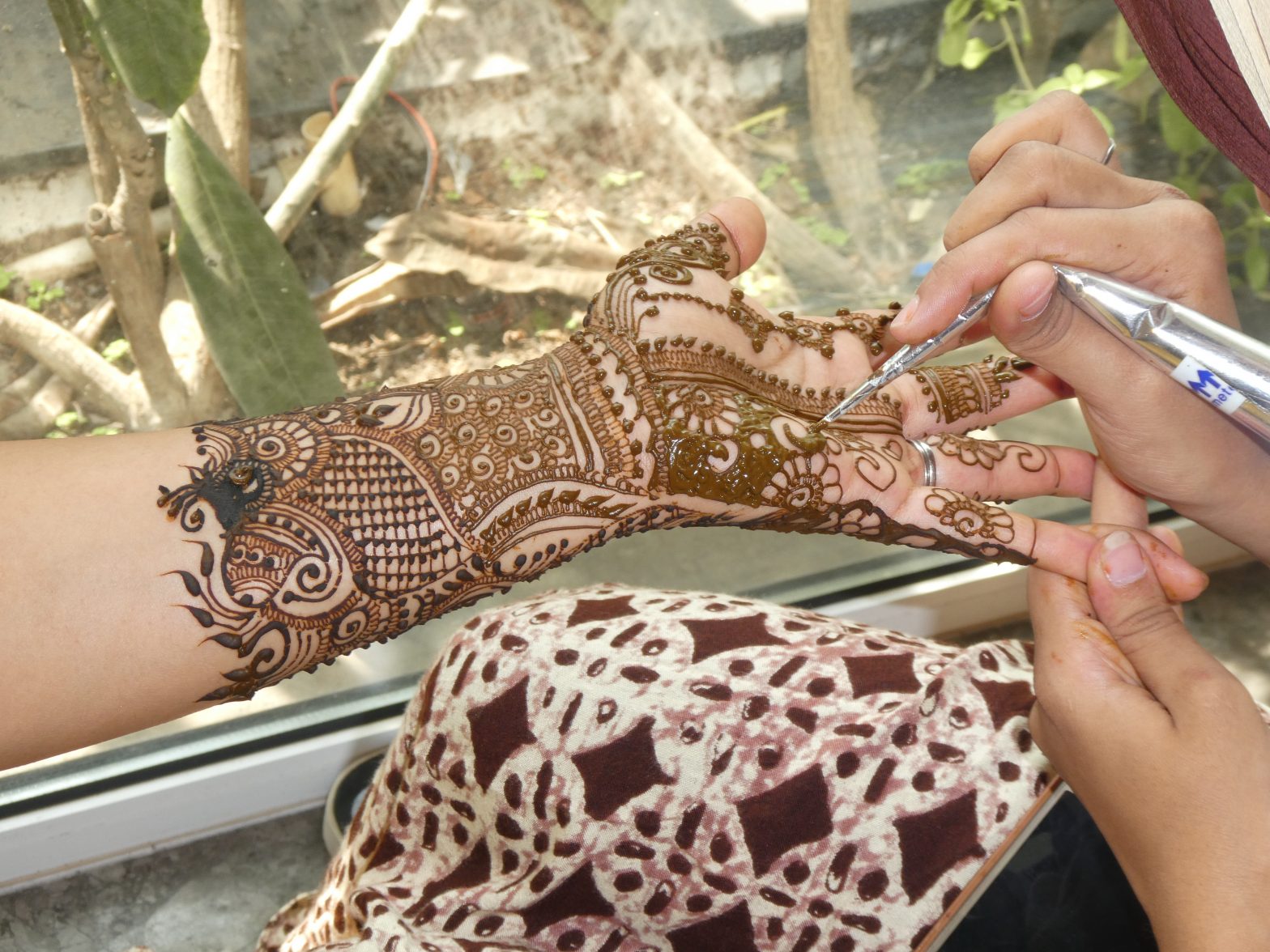It was very exciting to be invited to a wedding in India, so we packed our bags and headed off to Rajkot in Gujarat.
Gujarat is a dry state, so – following instructions from the groom – we had to apply for alcohol permits before we left –
With our Brits-abroad priorities firmly in place, the first thing we did in Rajkot was to summon a Tuk-Tuk, or auto rickshaw as they call them over here, to go to the state booze shop – braving the pollution to get there –
It turned out to be the busiest shop in town –
and we had to wait ages for our ration of 2 bottles of spirits or 26 cans of beer each (that’s a weekly ration, and pretty generous for a dry state, we felt). For those without permits, a handshake with a couple of thousand rupees changing hands is enough to secure your weekly ration with no questions asked.
Once the booze run was out of way, it was time for the mehndi, where all the women – and those men in touch with their feminine side – get their hands painted. The bride’s family were doing the same thing elsewhere, but as part of the groom’s contingent, we all met up in the hotel to have our hands painted by the two mehndi ladies hired for the event.
They squeeze the paste out of a tube with a very thin nozzle, and create beautiful patterns quickly and deftly.
Once the mehndi is done, you have to wait for it to dry, being very careful not to smudge it, and then leave the paste on to darken for a couple of hours.
Indian women joke that this is the time to be hand fed by your husband, as you can’t pick anything up for yourself. I wasn’t worried about the feeding, I just wanted my husband to carry my handbag for me, as my only other option would have been to kick it through the hotel and into the lift to get it back to our room.
After two hours you scratch the paste off your mehndi, which gives you delightfully dark brown smoker’s fingernails and makes a real mess in the shower, but your hands look wonderful.
The bride had her mendhi done at home, but when we saw it later we realised that you can have a design customised to your particular circumstances, and she chose to pay homage to her new life in England –
The next event was the garba, which is a dance. We all put on our dancing gear –
and headed off to the party lawns, a massive outdoor space where even the largest wedding can be accommodated – and we’re talking thousands here, for some weddings.
There was the obligatory photo shoot to start with – it seems that no Indian wedding is complete without at least eight photographers and multiple photo opportunities – and after dinner, eaten al fresco, the dancing began.
It was beautiful to watch and fun to join in – everyone was keen to show us the moves, so we clapped and swirled and tried to keep up with the others, who’ve obviously all been doing it every week since birth.
Each dance lasts 40-50 minutes and you can dip in and out of it as you please. The Indians – locals and Brits alike – all know the steps and they leap and turn in perfect unison, which is very impressive to watch.
The final dance is the stick dance, where you and your partner tap your sticks together as you dance. When done properly, it looks very elegant. Unfortunately Anthony danced as though he was beating me off with a stick, swiping it violently in my direction every time I approached, so I was forced to retreat and find a less aggressive partner.
The garba ended with a final manic freestyle dance – and then we all staggered back to the hotel … roll on day two!










